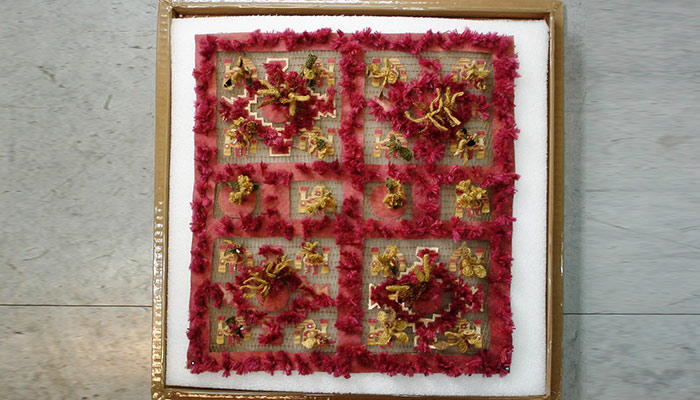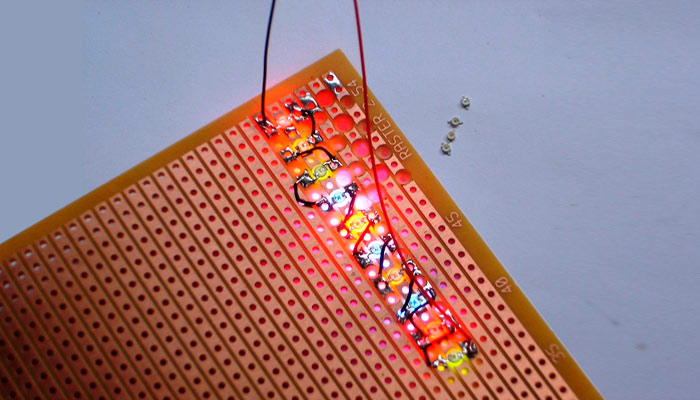Chimu, Labyrinths of a sacred costume
An innovative lighting system
What is a lux?
A lux is a unit used to measure the intensity of light. It is the equivalent of the flow of the light of a candela, or wax candle, projected at a distance of one meter over a surface of one square meter. The amount of lux is measured by an instrument called a luxometer, or light meter. In order to avoid the deterioration of textiles, the maximum level recommended is 50 units of lux.
The recreation of a fragment
We decided to recreate a fragment of the costume for the purpose of conducting the tests needed to design the exhibition’s lighting system. Because of the constant handling involved in achieving the objective, it was impossible to work directly with the costume.
A system based on LED
A lighting system was designed based on LED (Light-Emitting Diodes). These diodes emit a light whose temperature and color intensity can be carefully controlled. Each diode emits independent colors that can be regulated, once positioned in a circuit, to achieve different effects. This system minimizes the harmful effects of lighting, since the LED do not emit IR or UV rays, avoiding any damage to the costume’s colors and structure.
Advantages of LED
Among the many advantages offered by LED we can highlight a high rate of conversion, which differs from that of incandescent and fluorescent lighting. Almost all of the energy used by the LED is converted to light instead of heat. Another benefit of this lighting system is its low energy consumption, generally about 100 mw, compared with 1 watt used by the smallest light bulb, as well as its durability, up to 100,000 hours, compared to the 8,000 hours of a good quality incandescent light bulb. The reduced size of the LED is also a positive factor. Handling a LED is easy and does not affect its elevated mechanical resistance. It also tolerates blows and vibrations much better than an incandescent light bulb.
The pilot plan
The design of the lighting system for exhibiting the Chimú ceremonial costume has been undertaken as a pilot plan that can be applied to the permanent exhibition of textiles in the future. The new system diminishes the damage to the textiles and offers considerable savings in energy costs. Additionally, the possibility of being able to regulate the intensity and temperature of color allows us to highlight the textures and nuances of the pre-Columbian textiles that we have in the collection. It is also our objective to place our experience at the disposal of other museums in Chile, to improve the conditions for displaying exhibits, as well as reducing energy costs.






































